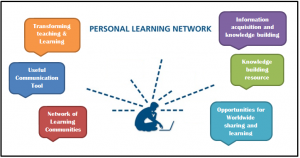Even the most skilled and brightest futurists in the 1990s could not have predicted the upcoming massive changes in the first decade of 2000 in higher education by consumer technologies such as the web, social media, cloud, and mobile computing. I still remember a job interview in the late 1990s for a university web director position. I was asked to present my vision of the university in the next decade and the role of the web and other technologies. Nowhere in my mindset were the consumer technologies that changed how we in the universities and students now do our day-to-day activities and business processes. I am intrigued and curious about what the higher education of 2020 would be like. I read predictions such as this “Higher education in 2020: three key forecasts from new report” and this (“College 2020”) as well as Gartner IT Predictions for 2014 and Beyond to get a sense of what to expect. However, the accuracy of these long-term predictions remains to be seen. However, even as I remain cautious about the validity of these predictions, I know that I better keep up with the trends, even if these trends are not part of what could be considered part of my job.
Yesterday, I spent a few hours with some student affairs directors brainstorming about communications in our division. I’ve been told in the past that our role as IT is to provide the tools, and the departments are the ones who communicate with students. Frankly, I’ve never believed in the idea that IT is just a tool/utility provider. I think the value of IT comes not only from the infrastructure we manage but also from the innovation and transformation of business processes that became possible because of our partnership with our business units to develop new systems and methods to do our business. With this mindset, I approach communication and the role of IT. It is also with this mindset that I view my role as an IT manager/leader. To be an effective IT leader, I need to keep up with the preferences and demands of our students, our staff and other customers, including how they would like to communicate. I need to keep up with technologies and the mindset that come along with them.
I was recently asked if IT should be involved in communications and marketing, to which I responded, “I don’t see any reason why IT should not be.” Traditional thinking of IT probably does not include communications and marketing as part of their responsibilities. Still, the way I see it, given that technology is such a big part of communication these days (as it has been in recent years) and in the future, IT folks better start re-considering this traditional view.
The increasing convergence between IT and marketing/communication led me to think about what my career in the future would be. A few years ago, the idea of a social media/communication/marketing position and a videographer reporting to me in IT would probably not have been an idea well accepted. After all, that’s not what IT does. It’s perhaps not a conventional arrangement to have these positions in IT in many organizations, even to this day. Thinking a few years ahead from now, I wonder how the role of IT will evolve. Will IT, as an organization, be combined with other departments, like marketing and communication, and be seen as part of a digital service organization? With this evolution, how will my role and responsibilities change? Ten years from now, will I have a career I would never have envisioned as it does not exist today?
As I think about the possibilities and the uncertainties of the future, what I do know and what I’ve committed myself to is to continually learn and understand emerging technologies, the changing nature of higher education, the changing demographics of our students, as well as their preferences and demands. Learning is a process, and it takes time. Learning is a journey that’s not always a straight line. Along the way, I’ve been introduced to ideas and people I did not expect to meet. So, while I do not know what my career holds in the future, I will continue to prepare and learn towards whatever the destination will be.

